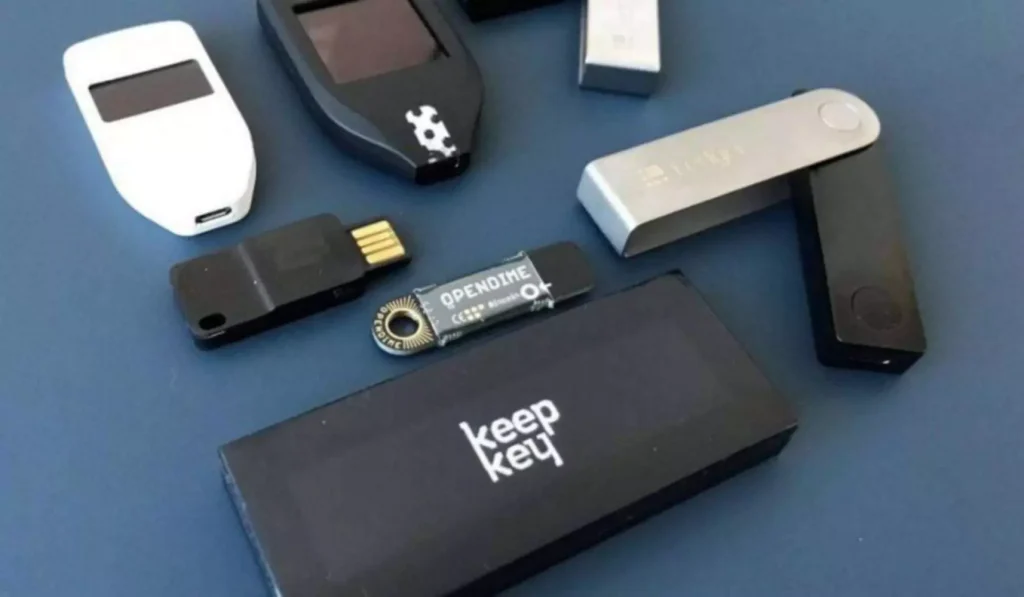Content
In doing so, it manages to maintain some kind of balance between early adopters and new users. These, and other questions regarding token burning will be answered below, so if you wish to learn more about this activity in the crypto space and find answers to some of your questions, keep reading. I particularly find coin burn a good thing and like holding some tokens/coins that implement some type of burn because it almost guarantees decent returns. And there are many out there like Binance that frequently and purposely burn coins to reward their token holders.
Others prefer to burn coins periodically at either fixed or variable intervals and volumes.Binance, for instance, burns tokens quarterly as part of a commitment to reach 100 million BNB tokens burned. The volume of coins changes based on the number of trades performed on the platform each quarter. Abhay Chebbi, Pro-Chancellor, Alliance University, said that in the real world, coin burn would amount to making a pile of currency coins or notes, and lighting a pyre to the pile. Coin burn in the cryptocurrency world is exactly the same albeit it is the burning of the cryptocurrency virtually.

• In a PoB network, miners have to burn some of their coins to mine new blocks. It sounds counter-intuitive, but miners then receive rewards in the form of new coins, when they verify a new block of transactions. In recent days, Bitcoin Cash has caught fire, with the virtual currency that forked from bitcoin last summer gaining 94% over the trailing week, through late evening on April 23, 2018.
What Is Cryptocurrency Burning?
Using the burn function that is included in the smart contract that issued the token. For instance, the Binance network regularly carries out a buyback and burn each quarter, whereby the Binance team decreases the amount of BNB tokens in circulation. Its 20th quarterly burn for example was completed in July during which 1,959,595.29 BNB were burned.
- You should also bear in mind that the mining pool will have an owner who will, rightfully, charge each member a fee for joining.
- One popular example is Dogecoin , a joke cryptocurrency that somehow managed to remain popular for nearly a decade, even though it was originally only expected to last a few months, at best.
- Not everyone in the community is happy about this situation and it can often lead to certain issues.
- The coins can be bought back at fair rates and then instantly burned to increase the value of each holder’s existing token amount.
- The Coin burn mechanism behaves as a natural way to safeguard against Distributed Denial of Service Attack .
- It is basically a one-way address that cannot be accessed or controlled by anyone.
Investment decisions should be based on an individual’s specific financial needs, goals, and risk profile. Advisory services offered through SoFi Wealth, LLC. SoFi Securities, LLC, member FINRA / SIPC. SoFi Invest refers to the three investment and trading platforms operated by Social Finance, Inc. and its affiliates . Individual customer accounts may be subject to the terms applicable to one or more of the platforms below.
What Is Cryptocurrency Coin Burning?
Some projects might also use coin burning as a sort of dividend payment to coin holders. If the owners of a token have a business that generates cash flows, like a crypto exchange for example, token holders could receive rewards through coin burning. Some cryptocurrencies developers intentionally burn tokens to accomplish these tasks. But even before Bitcoin Cash caught fire on news of a large miner burning coins, Binance Coin and its BNB token were embracing the idea of coin burn. If the name rings a bell, that’s because Binance Coin is the official coin of the Binance cryptocurrency exchange.
Since these wallets don’t have private keys that allow access, unlike regular crypto wallets, the coins or tokens are gone forever. No one can access the wallet so the cryptocurrency in the wallet can never be used or transferred. As the name suggests, Coin Burn is a process of intentionally burning or eliminating the coins rendering them to be unusable. Coin burn also means sending the crypto coins to such a public address where private keys are unknown or unobtainable. Hence, making the coins sent on that address unusable or inaccessible. As you’ve probably guessed, crypto burning isn’t carried out for the sake of it.
Where does burnt crypto go?
Hence, enabling a greater price stability for coins, as long time investors do not wish to sell or spend their coins. Burning can also be performed by crypto miners, who are usually responsible for putting crypto coins into circulation in the first place. This is because the burning process is also related to the Proof of Burn mechanism. A token burn is the destruction of a certain amount of tokens in order to reduce their number in circulation. This method is successfully applied by crypto projects, traditional businesses, and even global corporations . A while later, their token supply decreases and the value of the token rises by 10%.
That’s when the company that issued the stock buys back a number of shares and reduces the total number of shares on the market. The speed at which coins created through PoW reduces each time a new block is mined. This promotes regular activity by the miners; instead of mining one coin when mining first begins, miners must burn their early coins and mine new ones.

While a coin burn can bump up the value of a certain cryptocurrency, there are no guarantees that this process will increase the price, or that the price won’t then decline. In fact there are several other reasons developers might choose to burn coins. Tokens are burned by sending them to a wallet address that can only receive tokens, but not send any. If there were some way to guarantee the scarcity of a virtual currency, that would make coin burn a potentially intriguing value creator for existing tokenholders.
‘Money to Burn’: Why Do Companies Burn Their Tokens?
However, there are some wallet addresses that can only receive coins. So, whenever coins and tokens are sent to these addresses, they are removed from circulation. They still exist, as cryptos cannot be deleted, but they can never be retrieved to be used for payments of any kind, so they are forever gone from circulation. As such, they may as well be considered destroyed, and that means that the remaining circulating supply is permanently diminished by the amount that gets locked away.
While most folks have been scratching their heads and wondering what’s gotten into Bitcoin Cash, the answer looks to be nothing more than coin burn. As the virtual currency market has exploded higher and taken center stage, we’ve also witnessed a number of trends cycle to the forefront. In the second half of 2017, everything not named bitcoin was all the rage, as investors focused their efforts on the search for the next bitcoin.
In other words, you are destroying those tokens forever so that they no longer exist or are available to use. In the real world, you can literally burn your physical assets, such as money or a house, and watch them disappear from existence. https://xcritical.com/ This, however, won’t work for digital assets, so you must use digital means to perform the action. In general, this practice is intended to increase the value of the shares while increasing the company’s financial performance.
Secret (SCRT) Network Research Report – Should You Invest in SCRT?
Crypto burning can be done in several ways, but the most common one is by sending the token to an unusable wallet address, also commonly known as a burn address or an eater address. It is basically a one-way address that cannot be accessed or controlled by anyone. There is no way to recover or withdraw the tokens that are already sent there because there is crypto burn meaning no private key corresponding to the address. Proof-of-burn is one of the several consensus mechanism algorithms implemented by a blockchain network to ensure that all participating nodes agree to the true and valid state of the blockchain network. A consensus mechanism is a set of protocols that use multiple validators to agree that a transaction is valid.
Different Types of Coin Burning
Even the first cryptocurrency ever created has a fixed supply of coins, so this is not a new concept. In fact, this limited supply, which guarantees that new coins cannot be created, and therefore devalued. Investors should always consider why a crypto project wants to introduce token burning. Developers should have a clear goal in mind for introducing burning mechanisms. If the project’s leaders can’t articulate why they’re adding token burning, there’s likely no good reason to introduce this feature.
Although crypto burns affect a token’s supply, there need to be enough interested buyers to increase the price. By burning cryptocurrency tokens, they are removed from circulation. Similar to corporate stock buybacks, it can be beneficial to the cryptocurrency or backfire, depending on investor and user sentiments and how new supply and demand dynamics influence pricing. A wide range of coins and tokens have adopted the unique concept of Coin burn. Usually the Initial Coin Offerings integrate a coin burn mechanism for the unsold tokens at the end of the token sale. Also, major cryptocurrency exchanges like Binance has also adopted the coin burning mechanism to add value to those who hold BNB.
In April 2018, a miner working within the mining pool Antpool revealed that 12 percent of the Bitcoin Cash it mines would be sent to unobtainable addresses. Burning tokens can also benefit those staking tokens to validate transactions in a proof-of-stake protocol. When a large chunk of tokens are removed from circulation, there’s a likely chance they’ll receive a higher U.S. dollar value from their staking rewards. You can send out transactions to the network that will burn your coins. Other participants can mine/burn on top of your block, and you can also take the transactions of other participants to add them to your block.
Coin burning is what happens when a coin needs to be taken out of circulation so that it can no longer be bought, sold, staked, or used at all. Any cryptocurrency can be burned, regardless of its supply or value. “Burning” crypto means permanently removing a number of tokens from circulation. This is typically done by transferring the tokens in question to a burn address, i.e. a wallet from which they cannot ever be retrieved.
How To Stake Solana Token – 3 Best Methods
We mentioned previously that not all projects have a fixed supply — some can simply be mined indefinitely. One popular example is Dogecoin , a joke cryptocurrency that somehow managed to remain popular for nearly a decade, even though it was originally only expected to last a few months, at best. Burning itself is not a good or bad mechanic — it is a way of reducing the circulating supply. As such, it is just a mechanic that can be used as part of the project’s long-term plan for increasing the value of its token. So, to prevent early adopters from gaining an unfair advantage, this system implemented a mechanism that promotes the periodic burning of cryptocurrencies.
And in some cases, you also get the special right of mining blocks in weight of the coins that you have burnt. The idea is that miners/participants should show proof that they burnt some coins i.e., sent them to a verifiably unspendable address. This is expensive from an individual point of view, just like proof-of-work, but it consumes no resources other than the burnt underlying asset. Proof-of-burn is a method for distributed consensus and an alternative to proof-of-work and proof-of-stake. I am going to explain both one by one with the help of an example that you can very well relate to.
